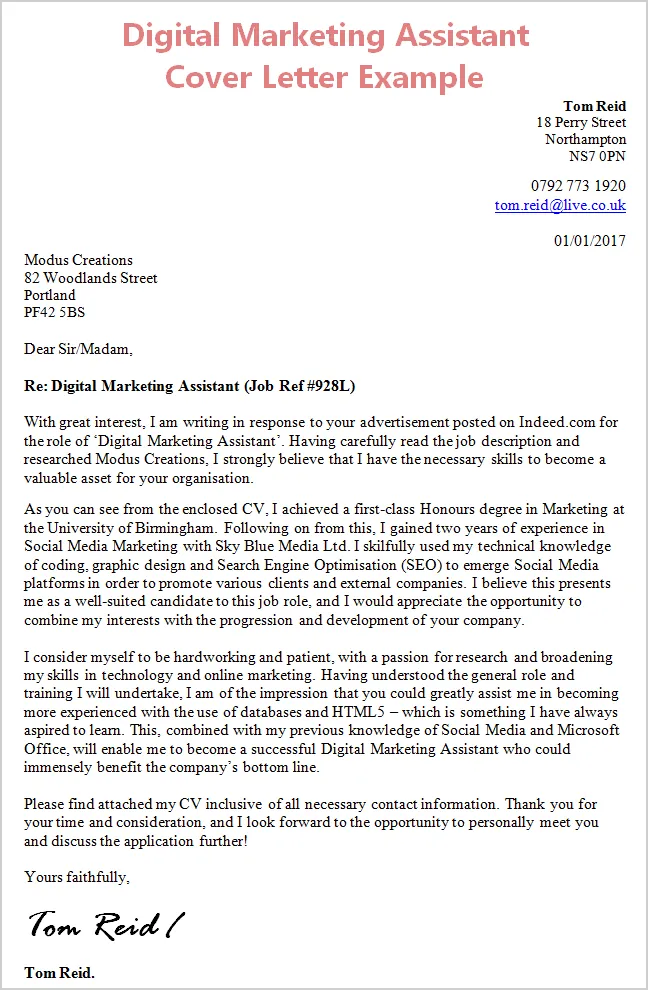Understanding the Marketing Assistant Cover Letter
A marketing assistant cover letter is your first introduction to a potential employer. It’s a vital document that complements your resume, providing context, personality, and a compelling narrative that showcases why you’re the ideal candidate. Unlike a resume, which lists your skills and experience, a cover letter allows you to elaborate, personalize your application, and express your enthusiasm for the specific role and company. This document should not just reiterate your resume; instead, it should highlight your key qualifications and connect them directly to the job requirements. The goal is to make a strong first impression, pique the hiring manager’s interest, and secure an interview.
Key Components of a Successful Cover Letter
A well-structured cover letter consists of several essential components. These elements, when combined effectively, create a cohesive and persuasive document. First, it’s crucial to include your contact information, the recipient’s details, and a proper greeting. Then, the body of your letter should highlight your relevant skills and experience, demonstrating your accomplishments with quantifiable results. Express your passion for marketing and your interest in the company, and always tailor your letter to the specific job description. Finally, proofread meticulously and close the letter with a professional sign-off. Each component plays a critical role in showcasing your suitability for the marketing assistant position.
Your Contact Information
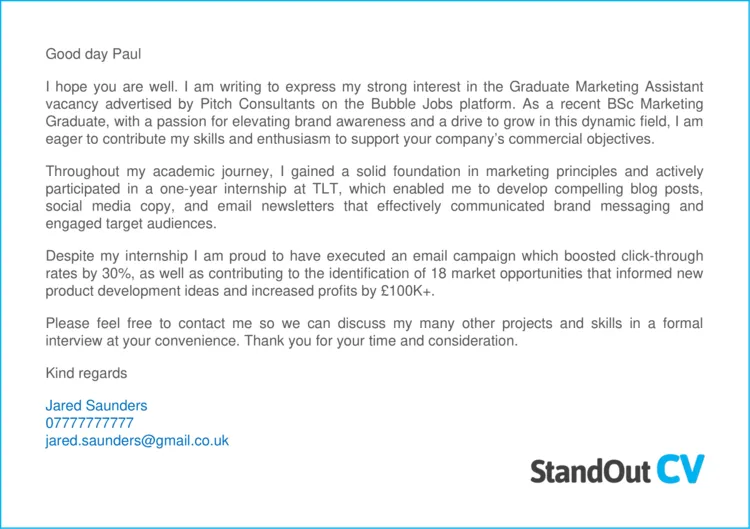
Begin your cover letter by providing your contact information. Include your full name, phone number, email address, and optionally, your LinkedIn profile URL. This information should be clearly displayed at the top of the letter, typically on the left or right side. Make sure the email address you use is professional and reflects your name. Correct contact details are essential for the employer to reach you. Ensure it is accurate and up-to-date, making it easy for the hiring manager to contact you quickly should they wish to learn more about your application.
The Recipient’s Information
Directly below your contact details, provide the recipient’s information. Ideally, address the letter to a specific person, such as the hiring manager or the marketing director. Research the company’s website or LinkedIn to find the correct name and title. If you can’t find a specific name, use a general title like ‘Hiring Manager’ or ‘Marketing Team’. Including the recipient’s details shows that you’ve taken the time to personalize your application and demonstrates your attention to detail. This can help you to make a more personal connection with the reader, which is crucial in the competitive world of job applications.
Greeting and Introduction
Start your cover letter with a professional greeting, such as ‘Dear Mr./Ms./Mx. [Last Name]’ if you know the recipient’s name. If you don’t, use a general greeting like ‘Dear Hiring Manager.’ Your introduction should be concise and attention-grabbing. Briefly state the position you’re applying for and how you learned about the opportunity. Express your enthusiasm for the role and briefly mention what makes you a strong candidate. This sets the tone for the rest of the letter and encourages the reader to continue. A strong opening can immediately set you apart from other applicants.
Highlighting Your Skills and Experience
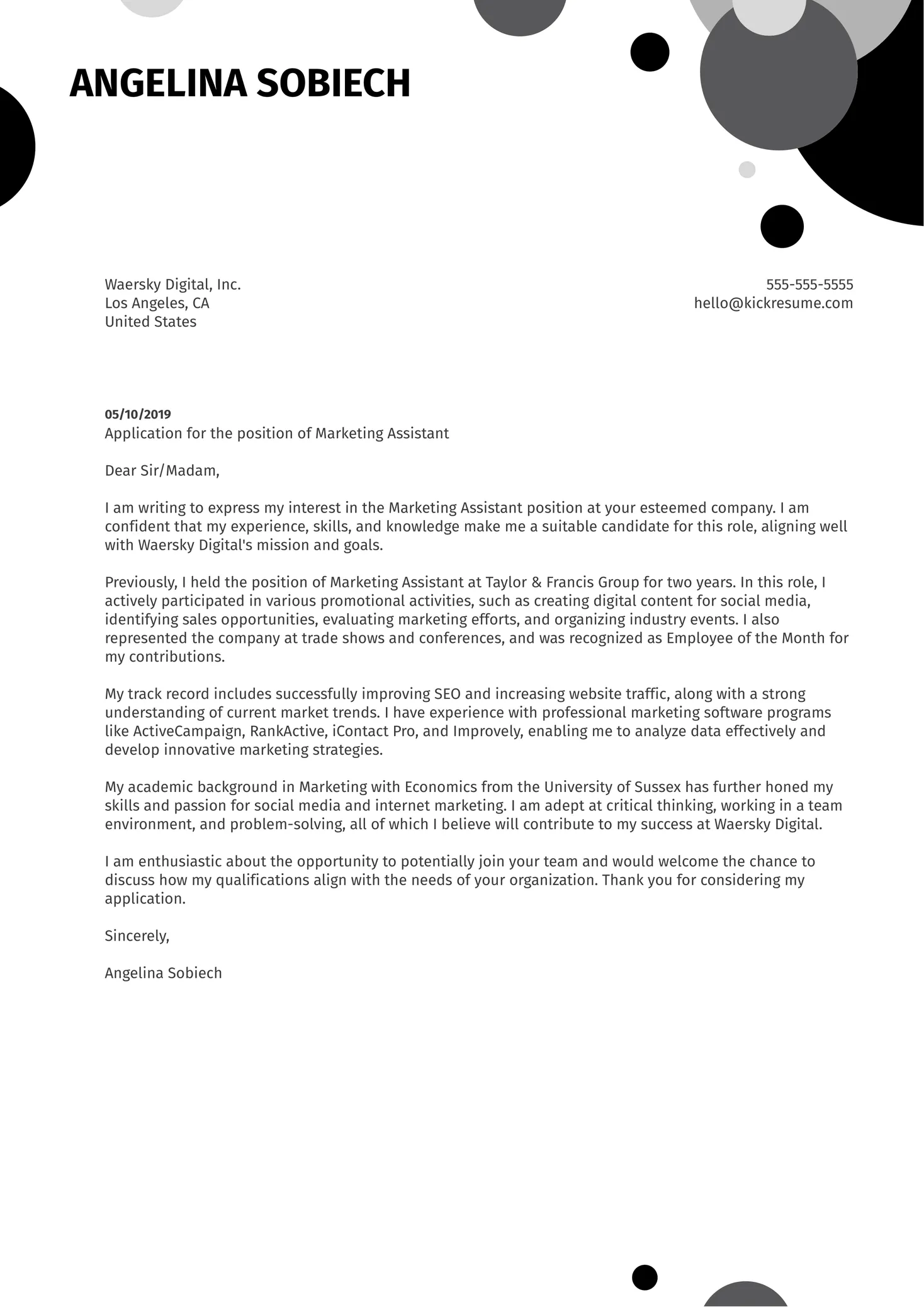
The core of your cover letter should focus on highlighting your skills and experience. This is where you demonstrate how your qualifications align with the job requirements. Instead of simply listing your skills, provide examples of how you’ve used them in previous roles or projects. Use action verbs to describe your achievements and responsibilities, and focus on the impact you made. Emphasize the skills that are most relevant to the marketing assistant position, such as communication, social media management, data analysis, and content creation. The goal is to show, not just tell, the employer what you can do.
Marketing Skills to Showcase
Identify the marketing skills that are essential for the role and showcase them in your cover letter. Include skills such as content creation, social media management, SEO knowledge, email marketing, and data analysis. Provide specific examples of how you have utilized these skills to achieve positive results. For instance, if you’re proficient in social media, describe how you increased engagement or grew a following for a previous employer. If you’re skilled in content creation, provide an example of a successful campaign or a piece of content you created. Show how your skills align with the marketing assistant requirements outlined in the job description.
Relevant Experience and Achievements
Detail your relevant experience and highlight your achievements. Describe your previous roles, focusing on responsibilities and accomplishments that are relevant to the marketing assistant position. Use the STAR method (Situation, Task, Action, Result) to structure your examples and make them impactful. Quantify your achievements whenever possible, using numbers to demonstrate the impact of your work. For example, ‘Increased social media engagement by 30% through targeted content strategies.’ This adds credibility to your claims and shows the potential employer what you can bring to the table.
Quantifying Your Accomplishments
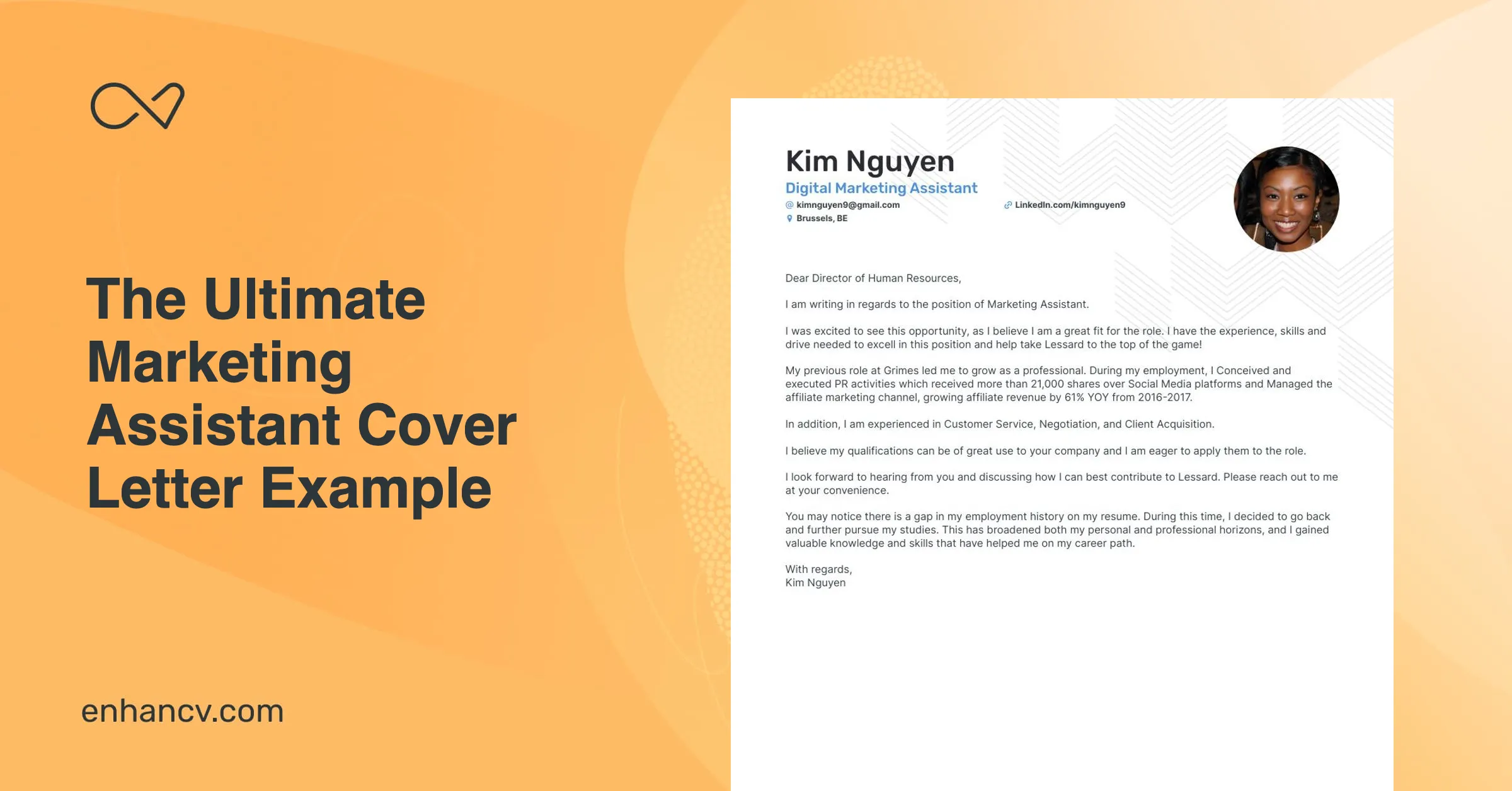
Whenever possible, quantify your accomplishments to make your cover letter more impactful. Use numbers, percentages, and specific data to demonstrate the results you achieved in previous roles. Instead of saying you ‘improved social media presence,’ state that you ‘increased follower count by 25% in six months.’ Quantifying your accomplishments provides concrete evidence of your abilities and helps the hiring manager understand the value you can bring to the company. This makes your application more compelling and shows that you are results-oriented. Specific numbers and data will catch the eye of the reader.
Demonstrating Your Passion and Enthusiasm
Express your passion for marketing and your enthusiasm for the specific role and company. Show that you’ve researched the company and understand its mission, values, and recent projects. Explain why you’re interested in the marketing assistant position and how your skills and experience align with the company’s goals. Personalize your letter by mentioning specific aspects of the company that appeal to you. Your genuine enthusiasm and interest will make a positive impression and increase your chances of being selected for an interview. Showing you have done your homework sets you apart.
Expressing Your Interest in the Company
Demonstrate that you’ve researched the company and are genuinely interested in their work. Mention specific projects, campaigns, or values that resonate with you. This demonstrates that you are not just sending out generic applications. Tailor your letter to show a specific interest in the company, and explain why you are a good fit for their culture. By showing a clear understanding of the company, you can demonstrate how your skills and experience can contribute to their success. This will make the reader think about what you can do for them.
Tailoring Your Letter to the Job Description
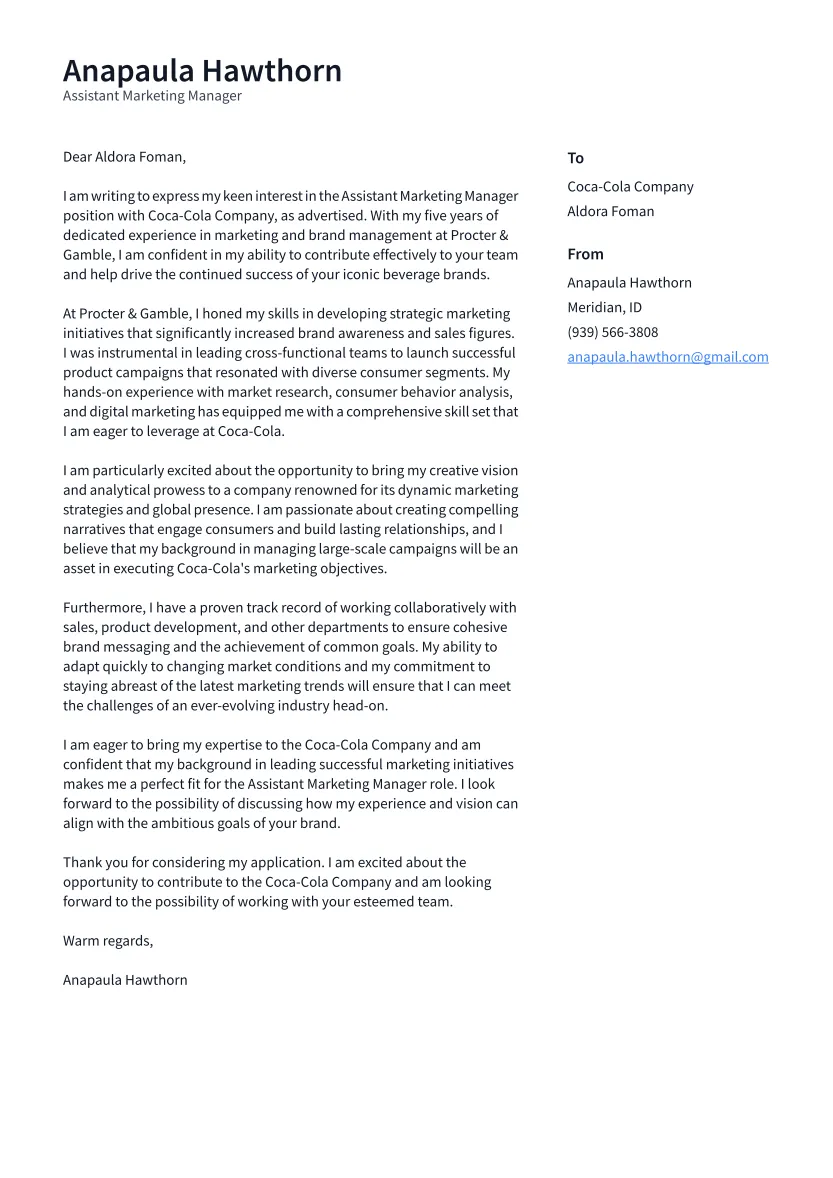
Customize your cover letter to match the specific requirements of the job description. Carefully review the job posting and identify the key skills and qualifications the employer is seeking. Then, align your cover letter to address these requirements directly. Use the same keywords and phrases that are used in the job description, but ensure your writing still feels natural and authentic. Show how your previous experience and skills meet the requirements of the role, and explain why you believe you are the best fit for the position. This demonstrates that you understand the role and what the company needs. This also helps the automated application tracking systems.
Proofreading and Formatting
Proofreading and formatting are crucial steps to ensuring your cover letter is professional and polished. Carefully review your letter for any grammatical errors, spelling mistakes, and formatting inconsistencies. A well-formatted and error-free cover letter shows attention to detail and professionalism. Poorly written letters can create a negative impression and may lead to your application being rejected. Take the time to ensure that your cover letter is flawless before submitting it. Consider asking a friend or family member to proofread it for a fresh perspective.
Formatting Best Practices
Follow formatting best practices to make your cover letter easy to read and visually appealing. Use a professional font like Times New Roman, Arial, or Calibri in a readable size (11 or 12 points). Ensure consistent spacing and alignment throughout the document. Use clear and concise language, and break up large blocks of text with paragraphs and bullet points. Use headings and subheadings to organize your content logically. A clean and well-formatted cover letter demonstrates professionalism and makes it easier for the hiring manager to read and understand your qualifications.
Proofreading Checklist
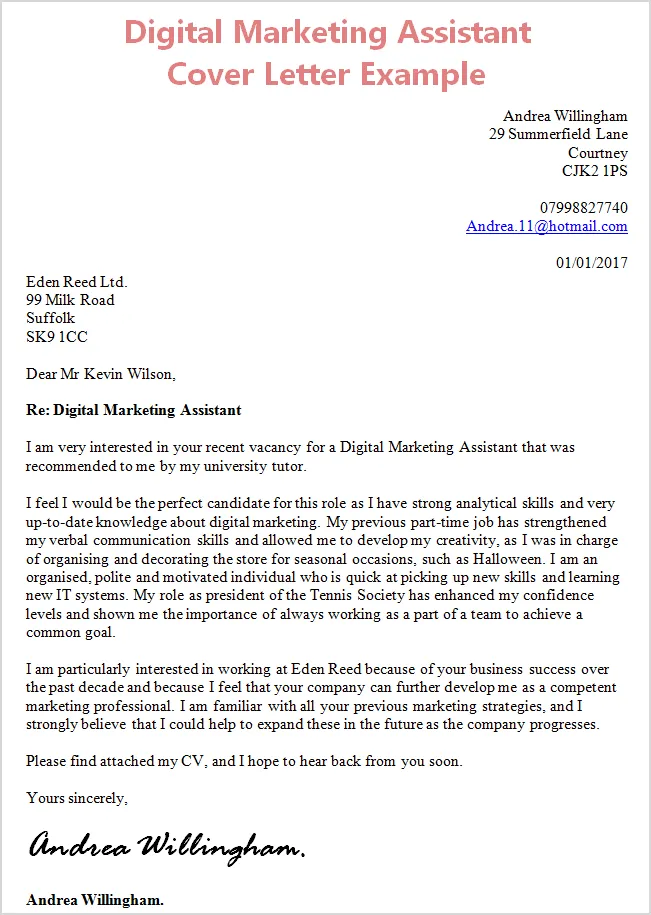
Use a proofreading checklist to ensure your cover letter is free of errors. Check for spelling mistakes, grammatical errors, punctuation errors, and typos. Verify that your contact information and the recipient’s details are correct. Ensure that your language is clear, concise, and professional. Confirm that your cover letter aligns with the job description and highlights the relevant skills and experiences. Double-check your formatting for consistency. Proofreading is a critical step and can significantly increase your chances of getting an interview.
Closing Your Letter
Your closing paragraph should summarize your interest in the position and reiterate your enthusiasm for the opportunity. Thank the reader for their time and consideration. State your availability for an interview and provide your contact information once more. Make sure your closing paragraph is positive and professional. A strong closing leaves a lasting impression and reinforces your interest in the position. The closing gives one final chance to make a favorable impression.
Formal Closing and Signature
End your cover letter with a formal closing, such as ‘Sincerely’ or ‘Best regards,’ followed by your typed name. If you are submitting a physical copy, leave space for your signature above your typed name. Ensure your closing is professional and appropriate for the context. A proper closing and signature demonstrate your attention to detail and your respect for the reader. Proper closing and signature show a professional approach.
Following Up After Submission
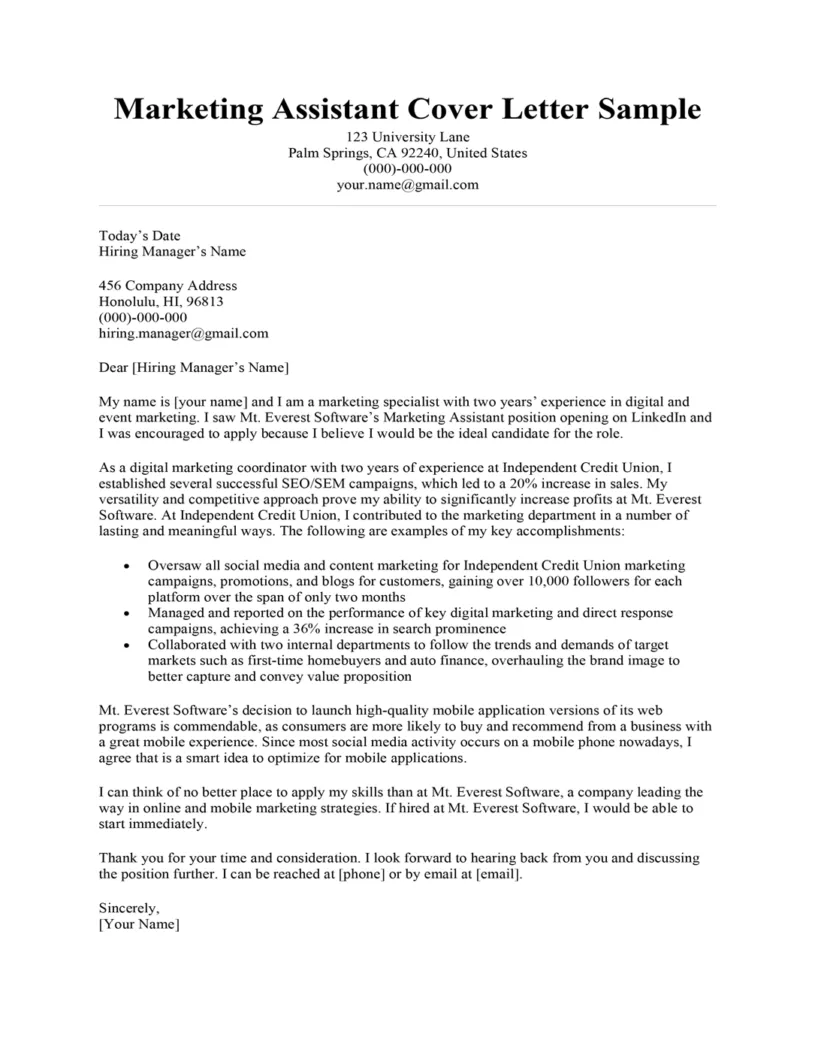
After submitting your cover letter and resume, it’s important to follow up. Send a brief email to the hiring manager a week or two after submitting your application to reiterate your interest in the position. Briefly reference the job title and express your enthusiasm. This follow-up demonstrates your continued interest and initiative. If you haven’t heard back after the follow-up, it is acceptable to send another follow-up a week or two later. Following up can demonstrate your proactive nature and commitment to the role. This reinforces that you are still interested.
